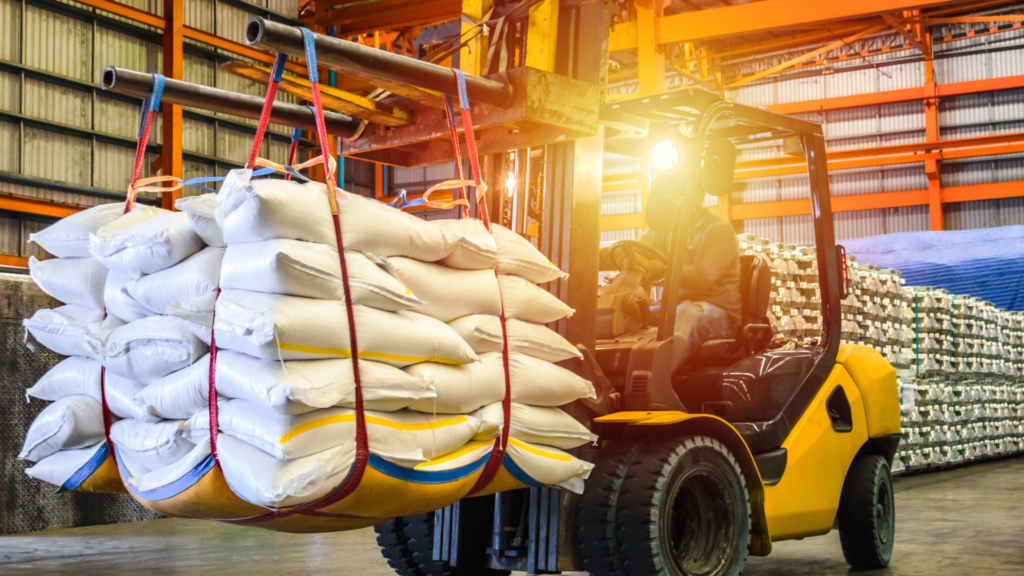Original publication date: August 13th, 2017
Updated: February 7th, 2024
Material handling encompasses various processes involved in the movement, control, protection, and storage of materials throughout manufacturing. In the realm of lean manufacturing, material handling is recognized as a non-value added activity and a significant source of waste that should be minimized or eliminated. To mitigate excess movement, it becomes crucial to establish an effective material handling process that optimizes the flow of materials.
The adoption of a well-structured process offers numerous advantages. It efficiently curbs waste, often a byproduct of disorganization or mishandling, thereby safeguarding materials from potential damage. Moreover, it inhibits the build-up of excess or expired materials, leading to financial benefits and heightened customer satisfaction. By fostering an environment of clear efficiency expectations, processes also promote greater awareness and responsibility among employees.
The Occupational Safety and Health Administration (OSHA) emphasizes the importance for employees to possess a comprehensive understanding of potential risks associated with their duties. It’s crucial that they are proficient in managing their work environments to effectively lessen these risks. In essence, the adoption of correct material handling practices not only establishes a safer work environment but also bolsters the overall productivity and well-being of the workforce.
To ensure the creation of a thorough and effective material handling process, consider the following ten best practices provided by the Material Handling Institute:
- Planning: Collaborate with suppliers, consultants, management, engineering, computer, finance, and operations specialists to define a plan aligned with organizational goals. Take into account process design, layout, and methods while considering current limitations and future requirements.
- Standardizing: Strive for consistency in methods, equipment, and storage choices without compromising overall performance goals. Flexibility and modularity may be necessary in certain situations.
- Simplify: Formulate process methods, sequence of operations, and the configuration of process or equipment in a manner that aligns with the goal of minimizing work. This goes hand in hand with streamlining material handling tasks by reducing, merging, or eradicating unnecessary movements whenever possible.
- Ergonomics: When assigning tasks and selecting equipment for material handling, prioritize worker capabilities, limitations, and safety. Eliminate any repetitive or strenuous work that could lead to injuries.
- Unit Loading: Whenever feasible, move multiple items as a single load instead of handling them separately to improve efficiency. It’s less labor-intensive and more efficient to gather and transport numerous items as one combined load rather than moving them individually one by one.
- Space Utilization: Organize and declutter all available work areas, including overhead space, to maximize space in a three-dimensional manner while balancing accessibility and selectivity. In storage spaces, the goal of optimizing storage capacity needs to be carefully weighed against the need for easy access and item selection.
- Systemize: The process of merging systems should cover all aspects of the supply chain, inclusive of the return flow of goods or reverse logistics. This integration process involves all stakeholders – from suppliers and manufacturers, right through to distributors and customers. Inventory quantities should be kept as low as possible throughout all phases of production and distribution. However, this should be done while taking into account fluctuations in the process and maintaining a high level of customer service.
- Automating: Before implementing any mechanized or automated systems, it’s essential to simplify and re-engineer existing processes and methods. This can greatly improve efficiency, responsiveness, and consistency. Furthermore, where it’s suitable, consider the use of computerized material handling systems. Such systems can effectively integrate material flow with information management, further enhancing operational efficiency.
- Environmental Considerations: Materials identified as hazardous require special considerations for spill protection, combustibility, and other risks. When implementing new material handling processes, it’s crucial to consider these factors along with the potential environmental impact. Aim for storage solutions and equipment that are not only capable of safely handling these materials but are also reusable, recyclable, and eco-friendly.
- Life-Cycle Cost: Formulate a strategy for preventive and predictive maintenance of the equipment, and incorporate the anticipated costs of maintenance and spare parts into the financial analysis. Also, prepare a long-term plan for equipment replacement once it becomes obsolete. This thorough evaluation should extend beyond the initial capital investment, encompassing aspects such as installation, setup, programming, training, testing, and repair.
By adhering to these best practices, you can develop a comprehensive and efficient material handling process that aligns with your organizational needs while keeping your employees safe.
Structured material handling processes are an invaluable tool when it comes to improving your business processes. If your business has been looking to implement the material handling techniques discussed in this blog and would like to set up a complimentary visit to discuss in further detail, please call Phyllis Levine, Director of Operations, at (845)391-8214 Ext. 3001 or via email to phyllis.levine@hvtdc.org.
